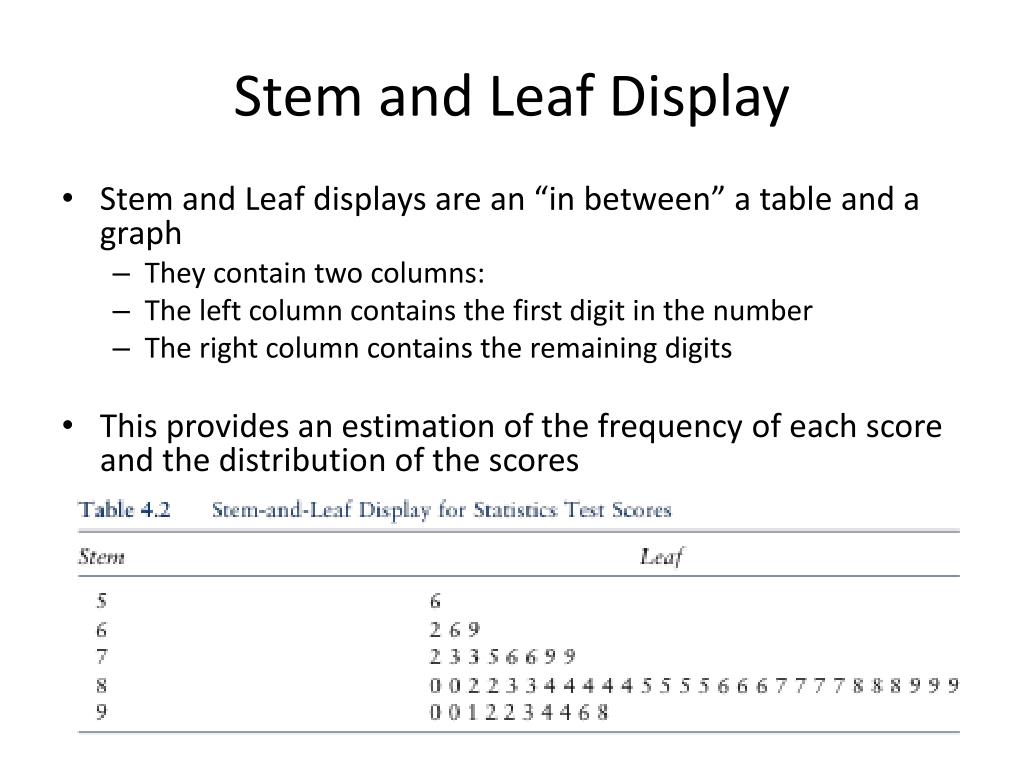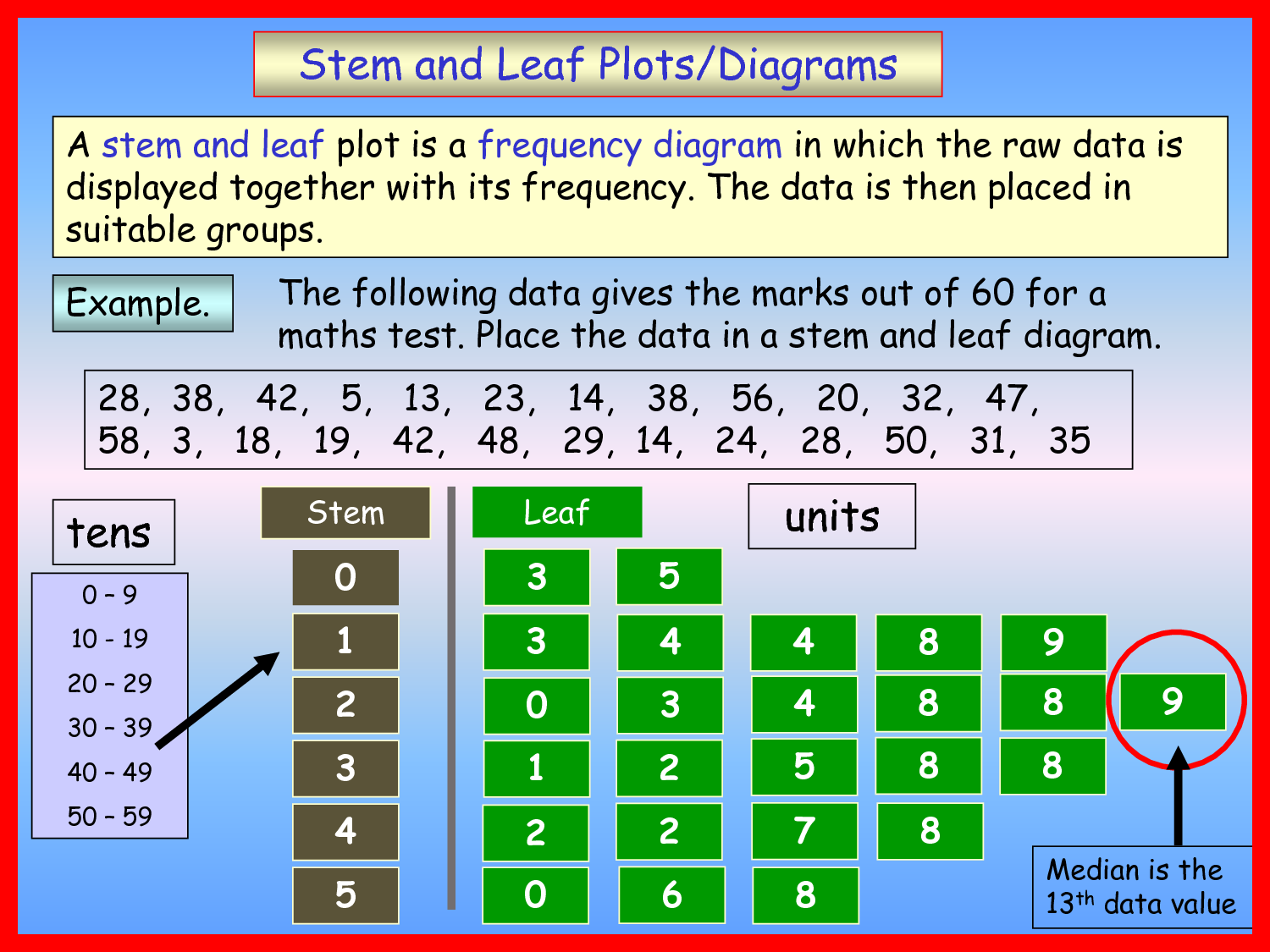

This is what his marks looked like plotted out: Every day, Elliot recorded his quiz marks on a stem and leaf plot.

As the year passed, each student tried to improve his or her quiz marks. The class marked them together and everyone kept a record of their personal scores. Example 1 – Making a stem and leaf plotĮach morning, a teacher quizzed his class with 20 geography questions. Not quite getting it? Try some exercises. In stem and leaf plots, tally marks are not required because the actual data are used. If the range of values is too great, the number 23.7 can be rounded up to 24 to limit the number of stems. Where observations are accurate to one or more decimal places, such as 23.7, the stem is 23 and the leaf is 7. If the observed value is 369, then the stem is 36 and the leaf is 9. These will be your leaves.įor example, if the observed value is 25, then the stem is 2 and the leaf is the 5. On the other side of the line, write down the ones (the last digit of a number).Draw a line to the right of these stems.On the left hand side of the page, write down the thousands, hundreds or tens (all digits but the last one).Once you have decided that a stem and leaf plot is the best way to show your data, draw it as follows:
#Stem and leaf display length how to#
Top of Page Tips on how to draw a stem and leaf plot shows how the data are spread-that is, highest number, lowest number, most common number and outliers (a number that lies outside the main group of numbers).



 0 kommentar(er)
0 kommentar(er)
